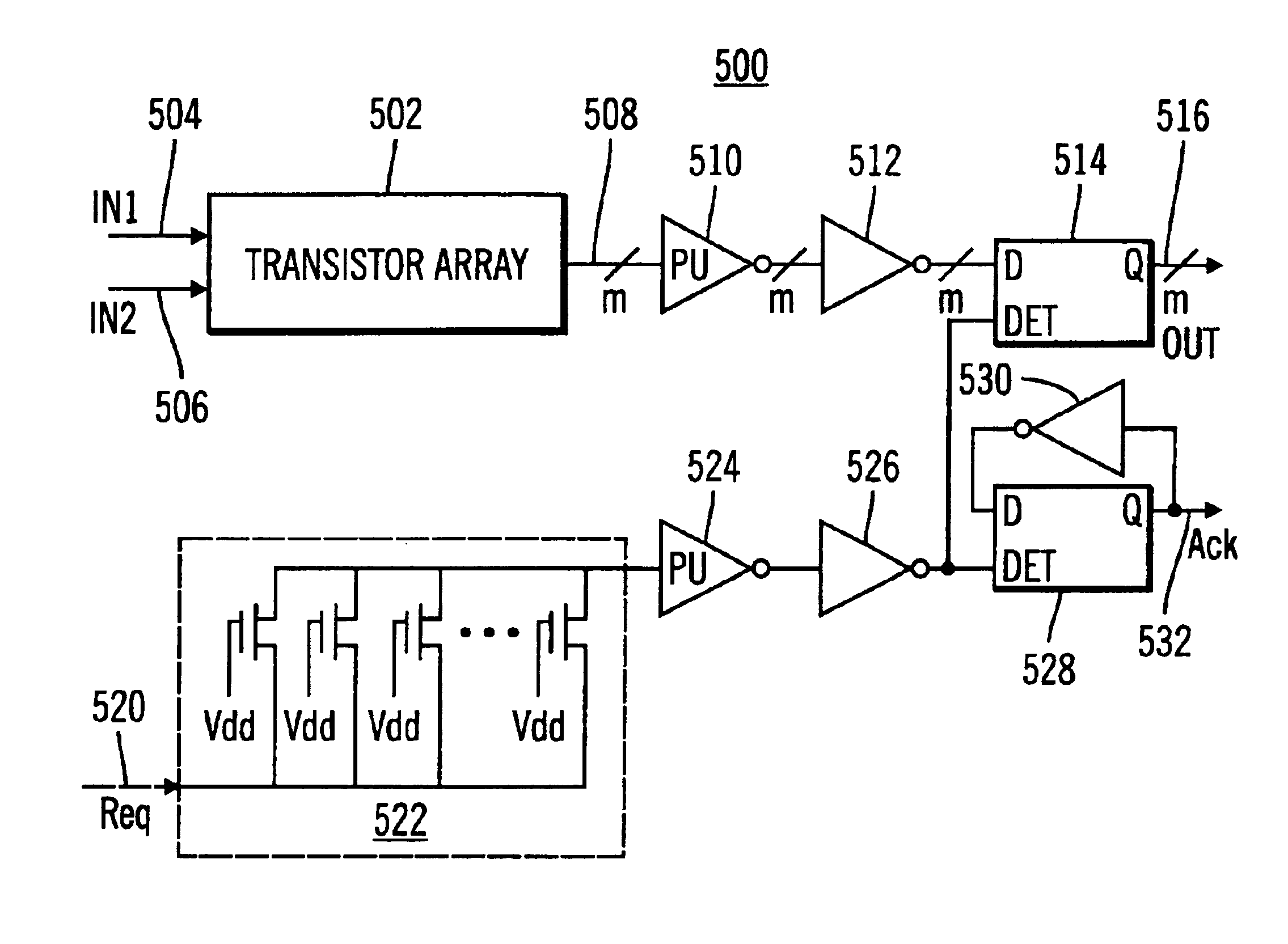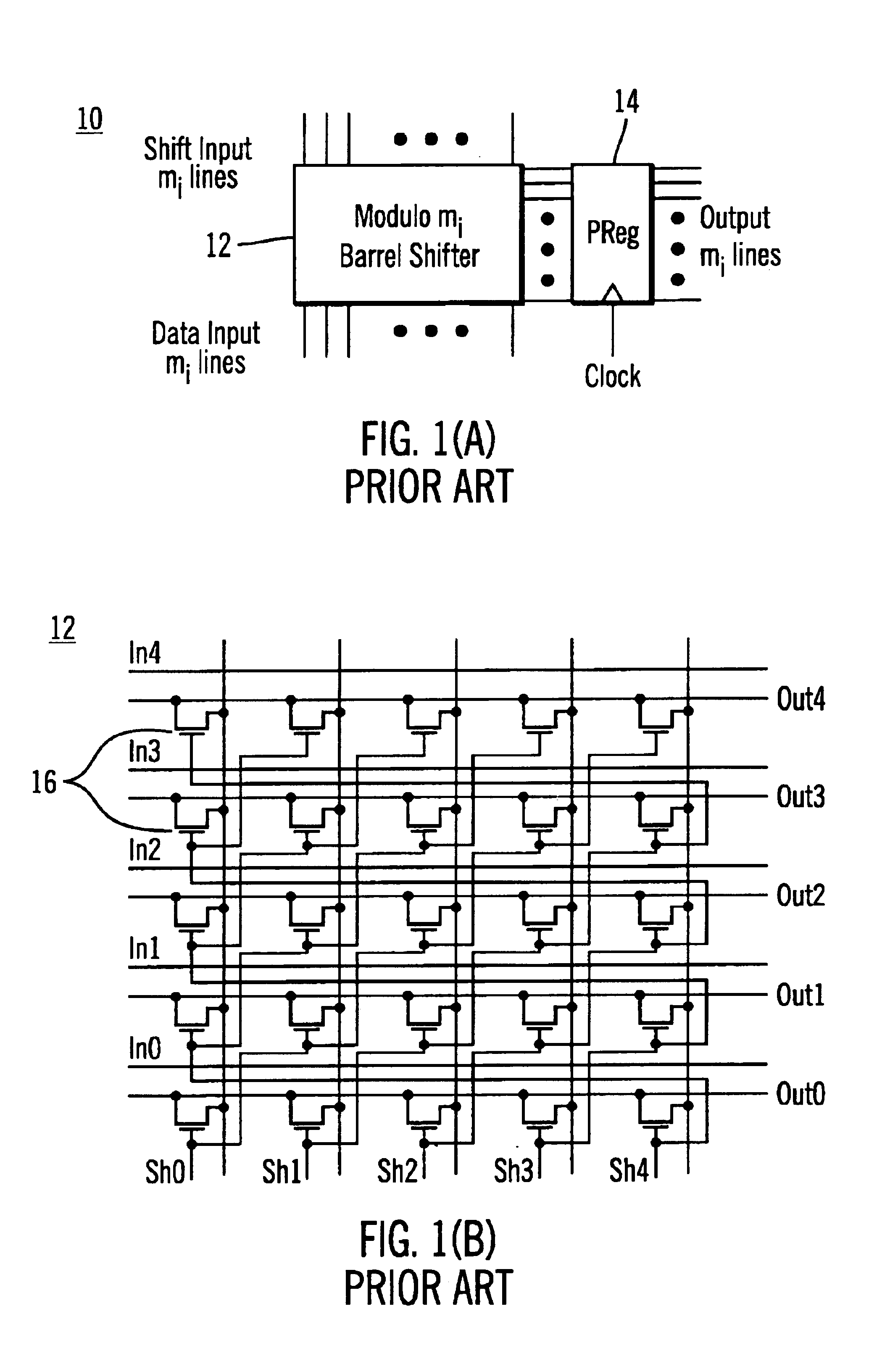Self-timed digital processing circuits
a digital processing and self-timed technology, applied in the field of electronic circuits, can solve the problems of other operations, base extension, and reducing the speed of the circuit, and achieve the effects of facilitating incorporation into larger circuit designs, reducing power dissipation, and high speed
- Summary
- Abstract
- Description
- Claims
- Application Information
AI Technical Summary
Benefits of technology
Problems solved by technology
Method used
Image
Examples
Embodiment Construction
[0042]Preferred embodiments of the present invention will be described in detail hereinbelow with reference to the attached drawings.
[0043]The core circuits used to perform OHRNS arithmetic operations have the advantageous property that the processing time required for a processing circuit to determine an output value for a changed input is identical for all values of inputs. Such circuits that have a processing delay that is not a function of input data values are referred to as isochronous circuits. The OHRNS arithmetic circuits exhibit this property because each input, as is illustrated in FIG. 1(b), drives an equal number of transistor terminals and each output is driven by an equal number of transistor terminals. This results in equal loading of each input and output, and any combination of valid OHRNS inputs results in similar transistor state changes (e.g., in the open drain OHRNS circuit illustrated in FIG. 1(b), all transistors conduct except the one corresponding to the lo...
PUM
 Login to View More
Login to View More Abstract
Description
Claims
Application Information
 Login to View More
Login to View More - R&D
- Intellectual Property
- Life Sciences
- Materials
- Tech Scout
- Unparalleled Data Quality
- Higher Quality Content
- 60% Fewer Hallucinations
Browse by: Latest US Patents, China's latest patents, Technical Efficacy Thesaurus, Application Domain, Technology Topic, Popular Technical Reports.
© 2025 PatSnap. All rights reserved.Legal|Privacy policy|Modern Slavery Act Transparency Statement|Sitemap|About US| Contact US: help@patsnap.com



